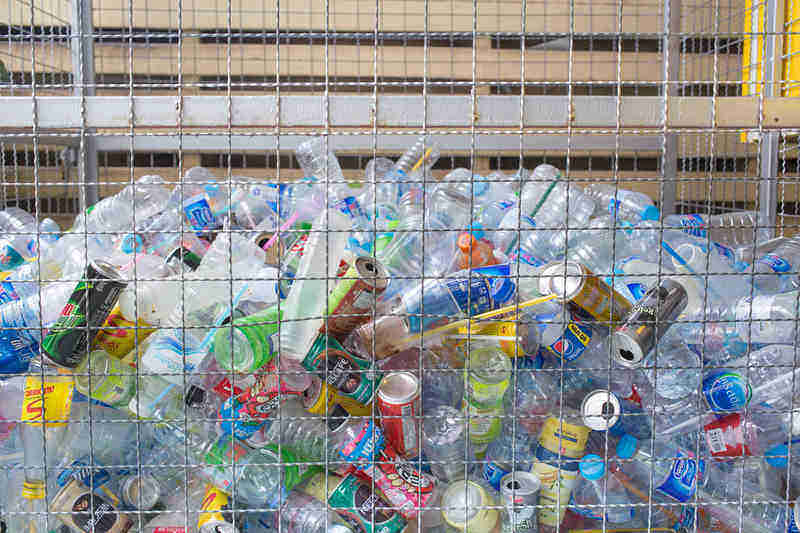
Several recent California laws are set to reshape the state’s deposit return system. | kornfotocom/Shutterstock
California’s beverage redemption system is undergoing massive change based on a handful of newly enacted laws, and a recent Container Recycling Institute webinar laid out just what alterations are coming.
Those laws include SB 1013, which expanded the deposit system to include wine and spirits this year, among other tweaks; SB 353, which brought payments to recycling businesses into closer alignment with material market values; and AB 2511, which extended through 2027 a market development payment program for reclaimers handling empty plastic beverage containers.
Susan Collins, president of CRI, said with all of those things happening at the same time, this is the biggest set of changes for the program since its inception.
Payment changes come alongside relative market stability
SB 353 was signed into law in October 2023 and was “meant to correct chronic underpayments to redemption centers,” Collins said during the Sept. 26 webinar. The bill allows the California Department of Resources Recycling and Recovery to base processing payments on the preceding three-month average scrap value, instead of the average of the prior 12 months.
Collins said since the change went into effect in the second quarter of this year, scrap prices “have been very stable, so the change in the law in this moment has had little effect.”
“It’s a bit of a moot point this year,” she said, noting that this law was meant to help bolster the industry in times of price turmoil.
However, one material type that was affected was HDPE, she said, as new funding became available via the law that amounts to an additional $20 per ton. As an example of the different payment calculations, at the beginning of the second quarter of this year, the prior 12-month average price for color HDPE bales was 14.41 cents per pound, according to RecyclingMarkets.net. But the average price of the prior three months was 19.04 cents per pound.
New containers enter the system
Collins said it’s too early to tell the effects of adding in new beverage types under SB 1013.
“It’s hard to tell what is wine and spirit growth and what is normal growth right now,” she said, noting 2024 data is still preliminary.
However, CRI had previously estimated that adding wine and spirits to the system could lead to 900 million more containers recycled, the equivalent of 500,000 new tons.
In addition, SB 1013 removed the option for retailers to choose to pay a $100 daily fee instead of accepting returned containers, requiring them to either accept the containers or join a dealer cooperative. Collins said before the law change, at least 100 stores were paying the fee, totaling about $10 million per year.
In addition, Gov. Gavin Newsom vetoed AB 457, which would have reduced the redemption payment and refund value for wine or distilled spirit beverage containers of less than 24 fluid ounces from 25 cents to 10 cents and would have allowed certain distributors and beverage manufacturers to make one annual payment of fees to the state.
He stated in a veto message that lowering the refund value would undermine SB 1013, “create confusion for recyclers, and likely result in consumers paying a higher CRV than they will be able to redeem” and stop the law from incentivizing the industry to stimulate development and create recycling pathways.
Collins said she does not agree that SB 1013 will stimulate the industry into development or creation of recycling pathways: “There is no funding for that.”
Next up: Tackling ‘redemption deserts’
Looking forward, Collins said CRI is working to pass legislation to mitigate the effects of the 52% loss of redemption centers between 2013 and 2020. The number of centers peaked in 2013 at just under 2,600, she said, but there are now only 1,400 in the entire state.
“We’ve got lots of redemption deserts in the state that we’re trying to address through the new legislation,” Collins said.
She also plans to watch to make sure all convenience zones are served, that the financial reporting is accurate and to see if grant funds are being used effectively.

